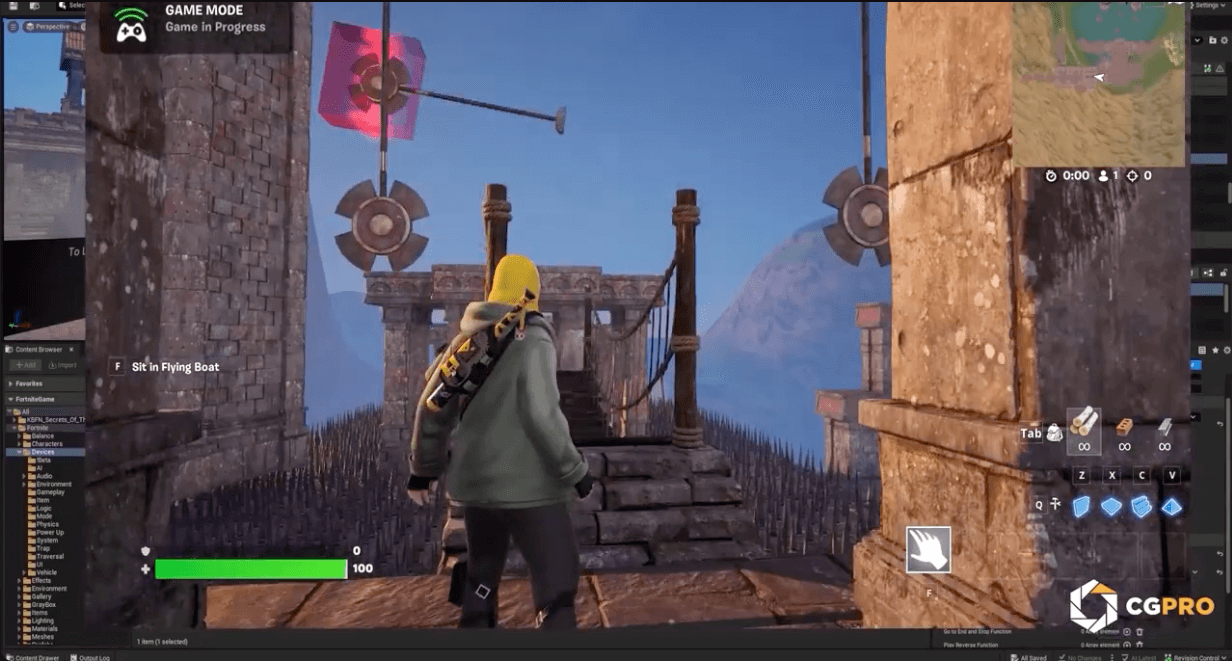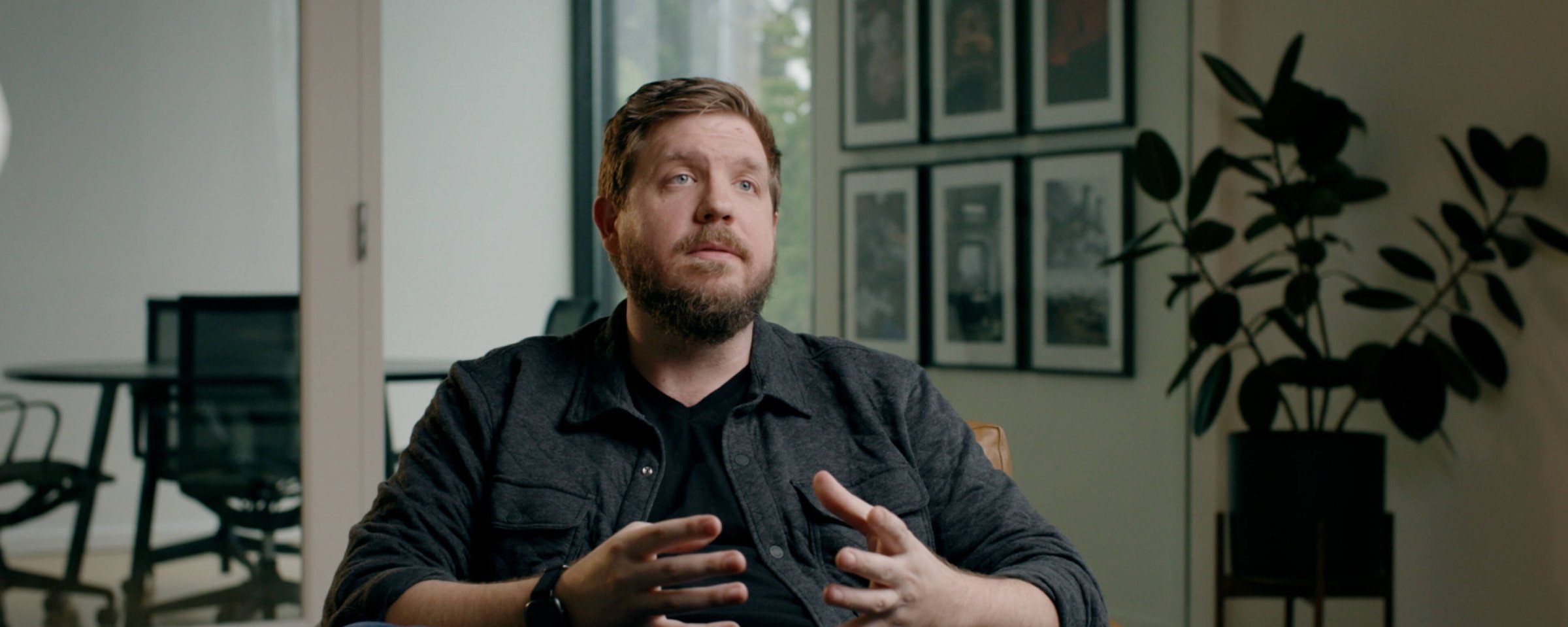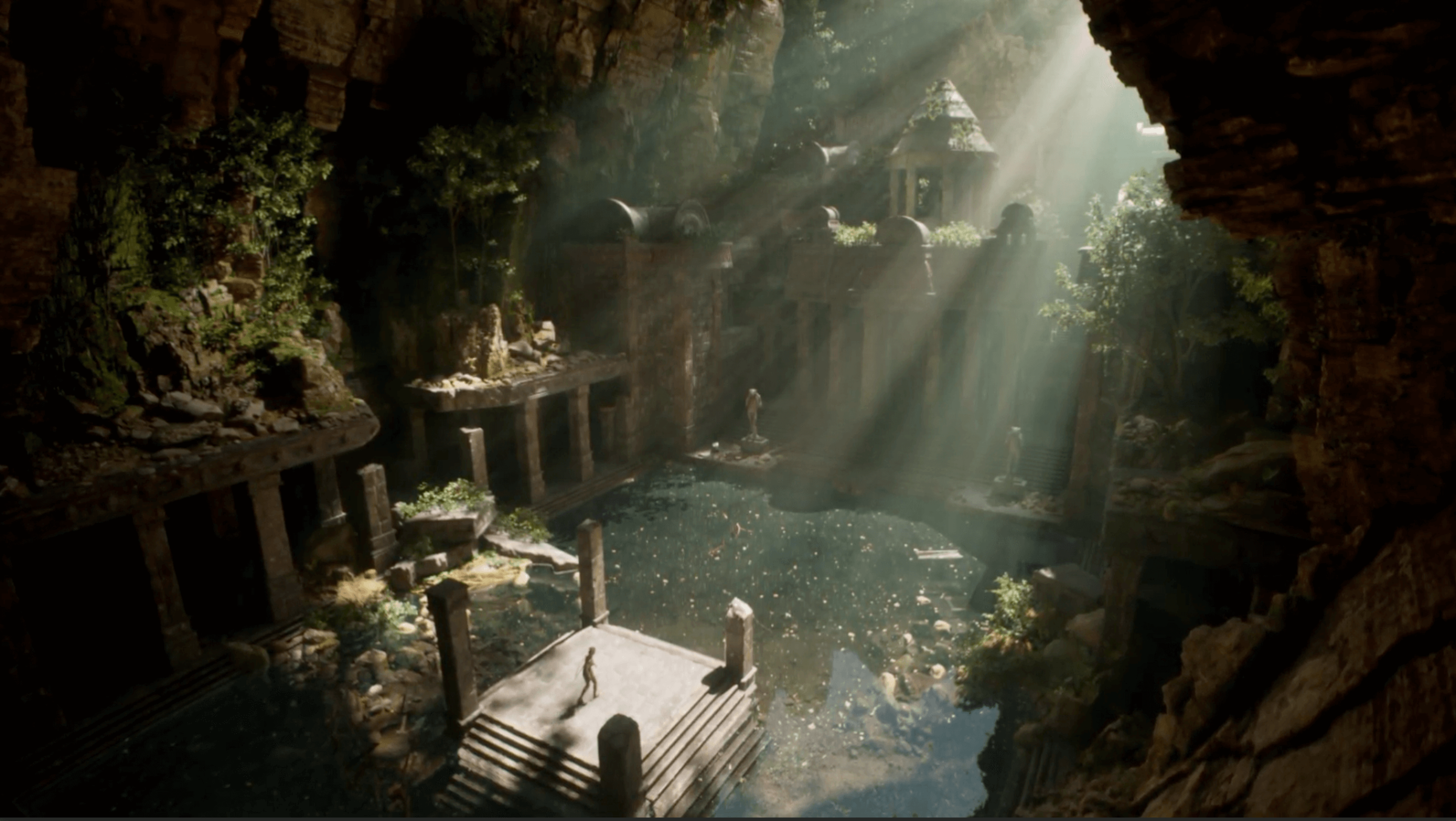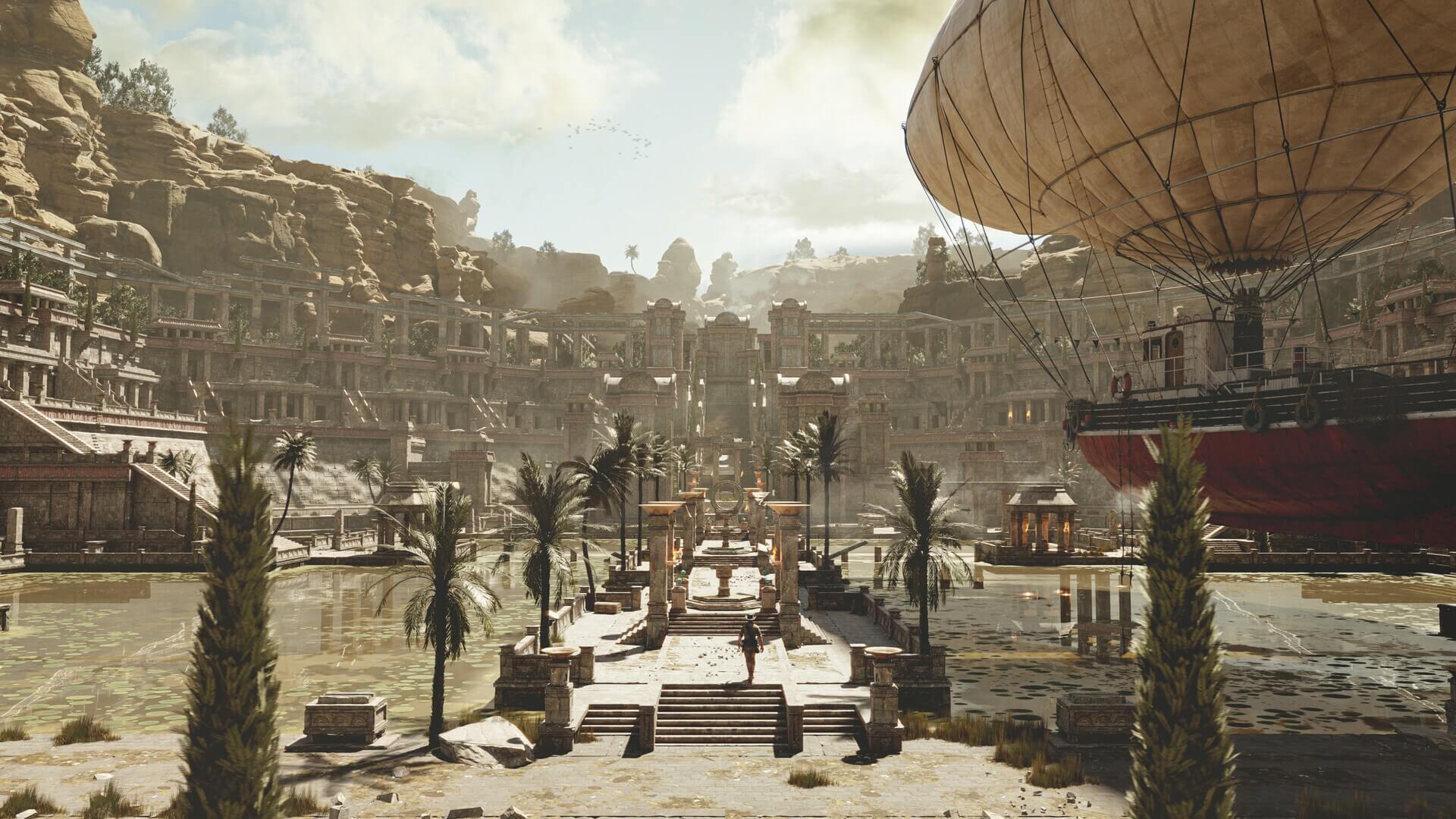Tamara Abas and Florian Becquereau, both Unreal Engine experts and CG Pro instructors, have crafted an awesome tutorial for Secrets of the Luminara! With Tamara’s background in virtual production and Florian’s technical expertise, they blend world-building and game design seamlessly in Unreal Editor for Fortnite (UEFN). In this interview, they discuss their journeys into the Unreal Engine world, the unique challenges of teaching, and the exciting potential of UEFN. Explore how these two creators bring their passion for Unreal Engine to life and inspire aspiring artists and game designers.
Thank you Tamara and Florian for sitting with us and sharing your experiences! We know our KitBash3D community will find your insights valuable! To start, could you each tell us a bit about your journey into the Unreal Engine world? What inspired you to pursue this field, and what was the moment that made you realize this was your passion?
Tamara: My journey into the Unreal Engine world started when I pursued my diploma in 3D Computer Graphics back in 2019. I was so inspired by how much this technology grows and develops year to year. It sparked my passion in becoming a technical artist as I loved solving problems and helping others in developing a strong pipeline. In time, I discovered my passion for teaching and wanting to make real-time virtual production more accessible for learning. Having this balance of working in industry and being an instructor has made my career so fulfilling.
Florian: The release of Unreal Engine 4 caught my eye, but when I tried to learn it, I hit the steep learning curve a little too abruptly and did not insist. Then when UE5 came out in early access, I was ready to put in the work to climb that curve, and quickly started to love it. I wanted to learn everything about Unreal so that if any idea for a 3D experience came to mind, I would know how to make it happen.
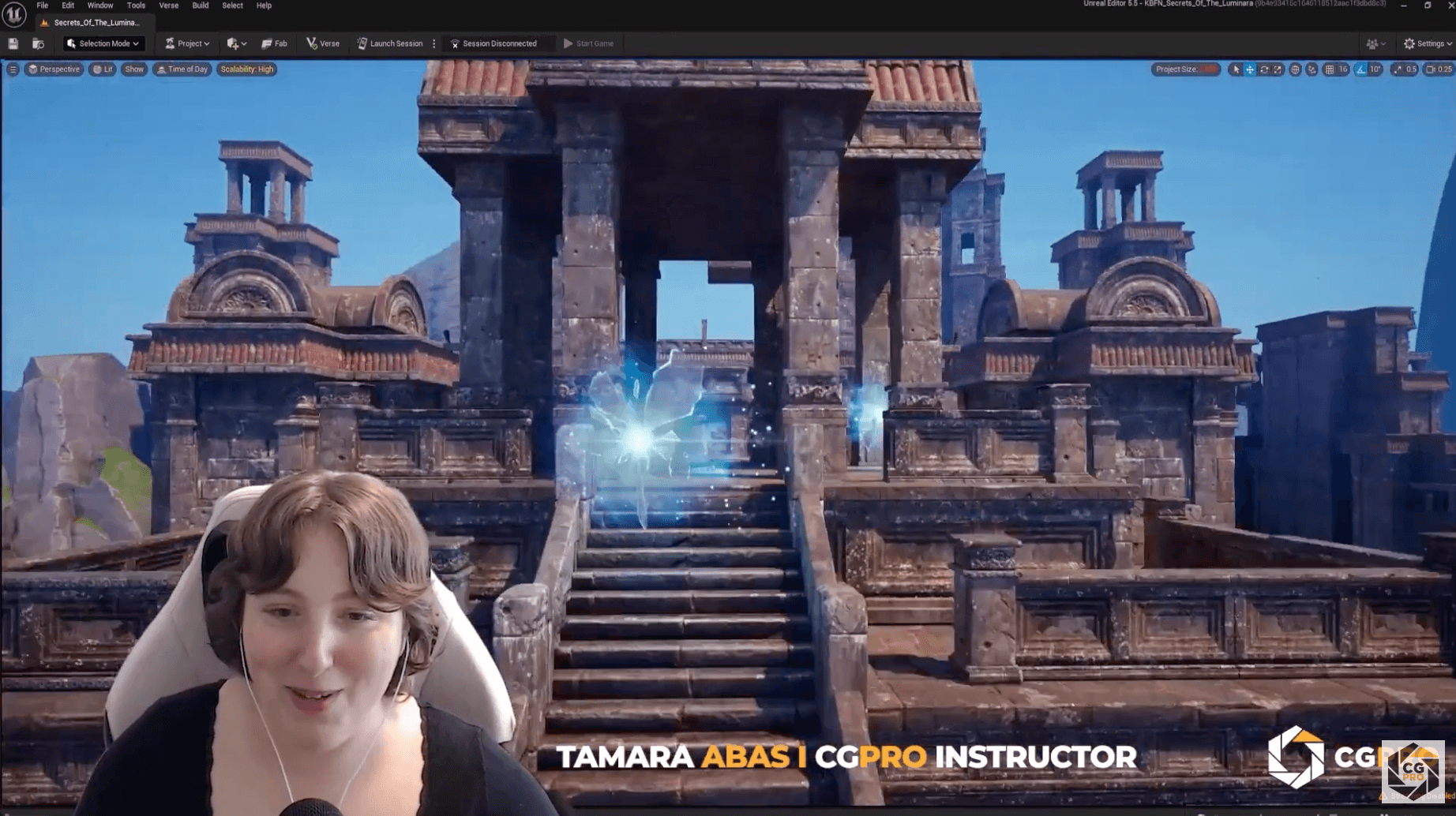
You’ve both been heavily involved in teaching Unreal Engine. What do you enjoy most about instructing others in this technology, and how do you approach breaking down complex topics for new learners?
Tamara: I really enjoy the aspect of Unreal Engine being a real-time 3D application that my students get that immediate response to the work they are developing. It is such a joy to see them just have fun and explore. For me, approaching complex topics is all about having fun creating and solving problems. I love to simulate real-world scenarios in industry so my students can feel comfortable and develop those skills through hands-on learning.
Florian: I love showing people how they can easily make something fun and pretty. It empowers them and gives them extra motivation to keep learning this huge platform and the myriad of tools that come with it.
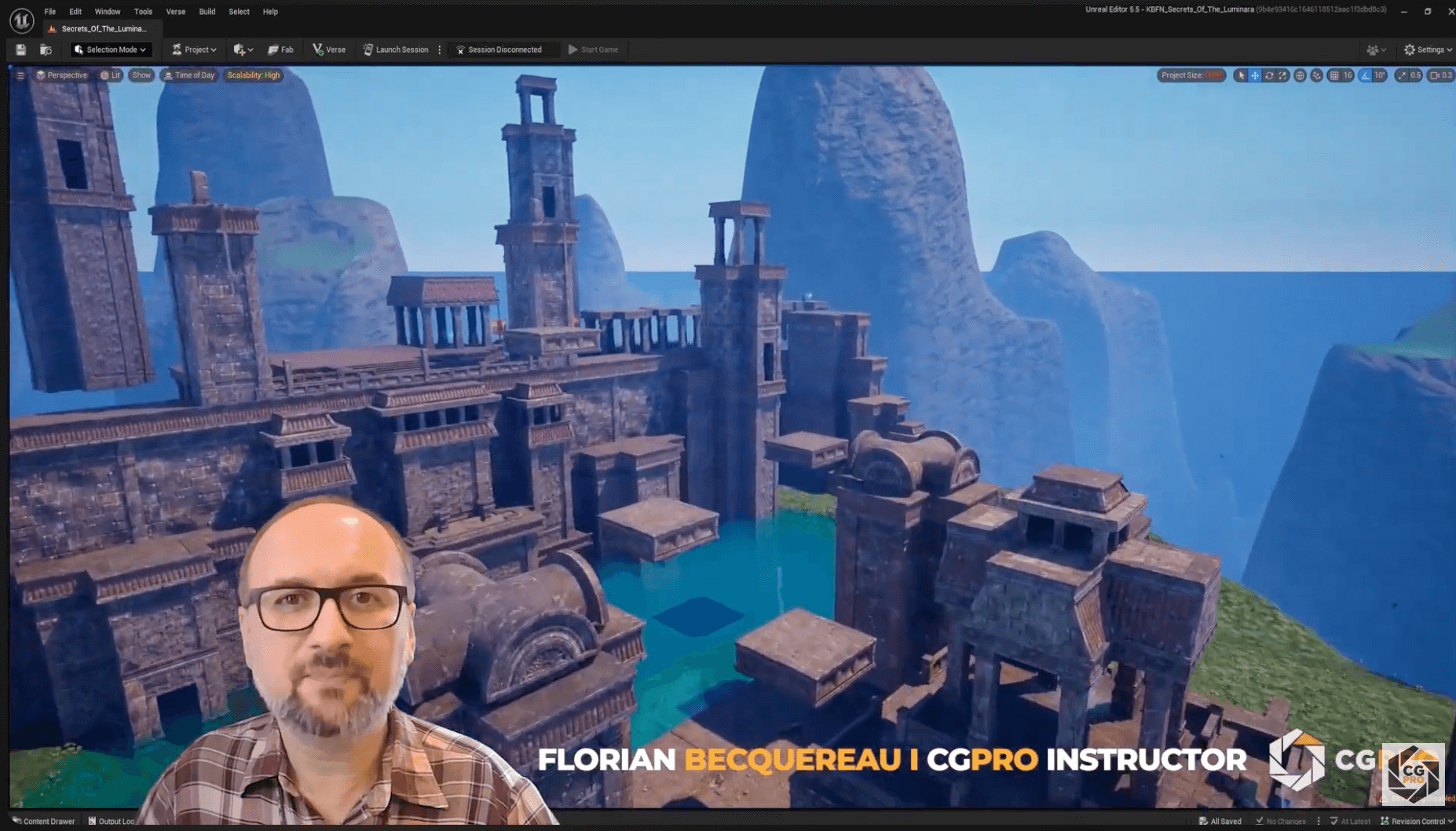
The Secrets of the Luminara tutorial offers a unique blend of world-building and game design. How did you approach structuring this course, and what aspects were most exciting to develop?
Tamara: In structuring this course, it was really important to Florian and I for viewers to feel they can have a completed experience from start to finish. With the idea of building an adventure game with puzzle solving elements, I really enjoyed developing world-building and how that influenced the mechanics Florian built through Verse and Fortnite devices.
Florian: Since Fortnite is a game platform, it was immediately clear that we had to do more than a scene and/or an animation. It was a powerful way to show how quickly you can both use external high quality assets like those of the Secrets of the Luminara, and make a (simple) game that you can publish, all explained in less than half an hour. One of us could then focus on the world-building and aesthetics while the other one would focus on the gameplay, all of it happening smoothly thanks to UEFN’s collaboration features. With so many Fortnite assets included in UEFN, Fortnite games tend to look alike. Using the KitBash3D assets really makes the game stand out.
With both of you having backgrounds in various digital and technical skills, how do you see the relationship between technical expertise and creative expression in virtual production?
Tamara: I love this question so much! With virtual production, the relationship between technical expertise and creative expression is key in your success in virtual production. Especially in the realm of in-camera VFX (ICVFX), you really need to be the person who understands how Unreal Engine is used to develop these elaborate virtual sets with a creative eye. At the same time, you will be much more valuable if you are able to identify issues on set and be a true problem solver. A generalist approach is really key. You don’t need to be an expert at everything. However, being able to communicate and understand the pipeline will take you very far.
Florian: Technical expertise and creativity really go hand in hand. It’s a strange yet uniquely beautiful aspect of virtual production. The passion for the technology which fuels your drive to constantly learn more, also increases your capacity to express your creativity. What I actually love about programming is the creation process. Creativity can be found beyond the audio and visual arts.
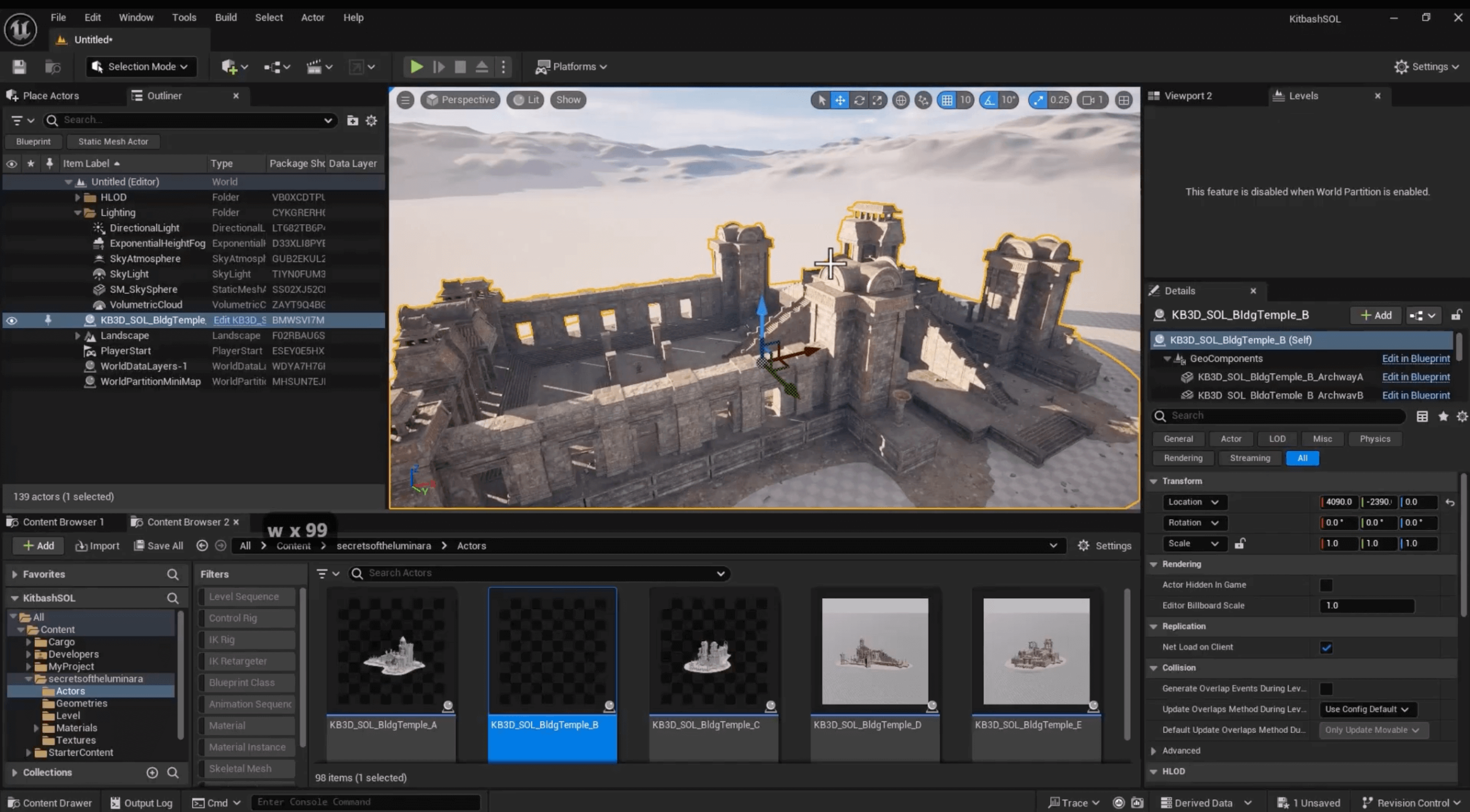
Tamara, as Canada’s first female Unreal Authorized Instructor, you’ve paved the way for many aspiring artists. What challenges have you faced on your journey, and how have they shaped your teaching philosophy?
Tamara: Thank you so much! The challenges I faced on my journey is feeling I had to know everything before I started getting work in the industry. It is very easy to fall into that trap of imposter syndrome. What I have learned is to always maintain a beginner’s mindset, be curious and excited because Unreal Engine changes constantly. Being able to adapt and change to this ever growing ecosystem is what has shaped my teaching philosophy. Always keeping that spark and passion to drive your learning and remembering what brought you here will carry you throughout your career.
Florian, you’re known for your problem-solving skills and technical prowess. How do you incorporate these strengths into your instruction, and how have they influenced your work on Luminara?
Florian: I go for the “Aha!” moments. I love having those myself, and do all I can to make my students have them as well. It’s a great feeling to see the metaphorical light bulb turn on on a student’s face. My background as an instructor, both in Unreal Engine and Unreal Editor for Fortnite, gave me insights about what concepts are hard to understand, and how to start from a place that is easier to approach and enables the students to produce something very early in their path. This gives them confidence that they can learn and make games.
What was it like collaborating on CG Pro’s Luminara tutorial, and what did each of you bring to the project that made it unique?
Tamara: Collaborating with Florian was absolutely amazing as we really balanced each other in terms of our unique skill set. With my background in virtual production, telling a story through an environment was something we really wanted in our tutorial. Everything from environment layout to lighting and incorporating the lore of Luminara was all considered in the development of this tutorial.
Florian: It was awesome to partner with someone who brings virtual production skills like Tamara does. She’s also the most cheerful and encouraging person I have ever met. Her skills in environment design and lighting let me focus on the game design features unique to UEFN, and we could cross check our ideas with each other, to meet the challenge of making such a short tutorial on making a game from scratch with no prior experience whatsoever.
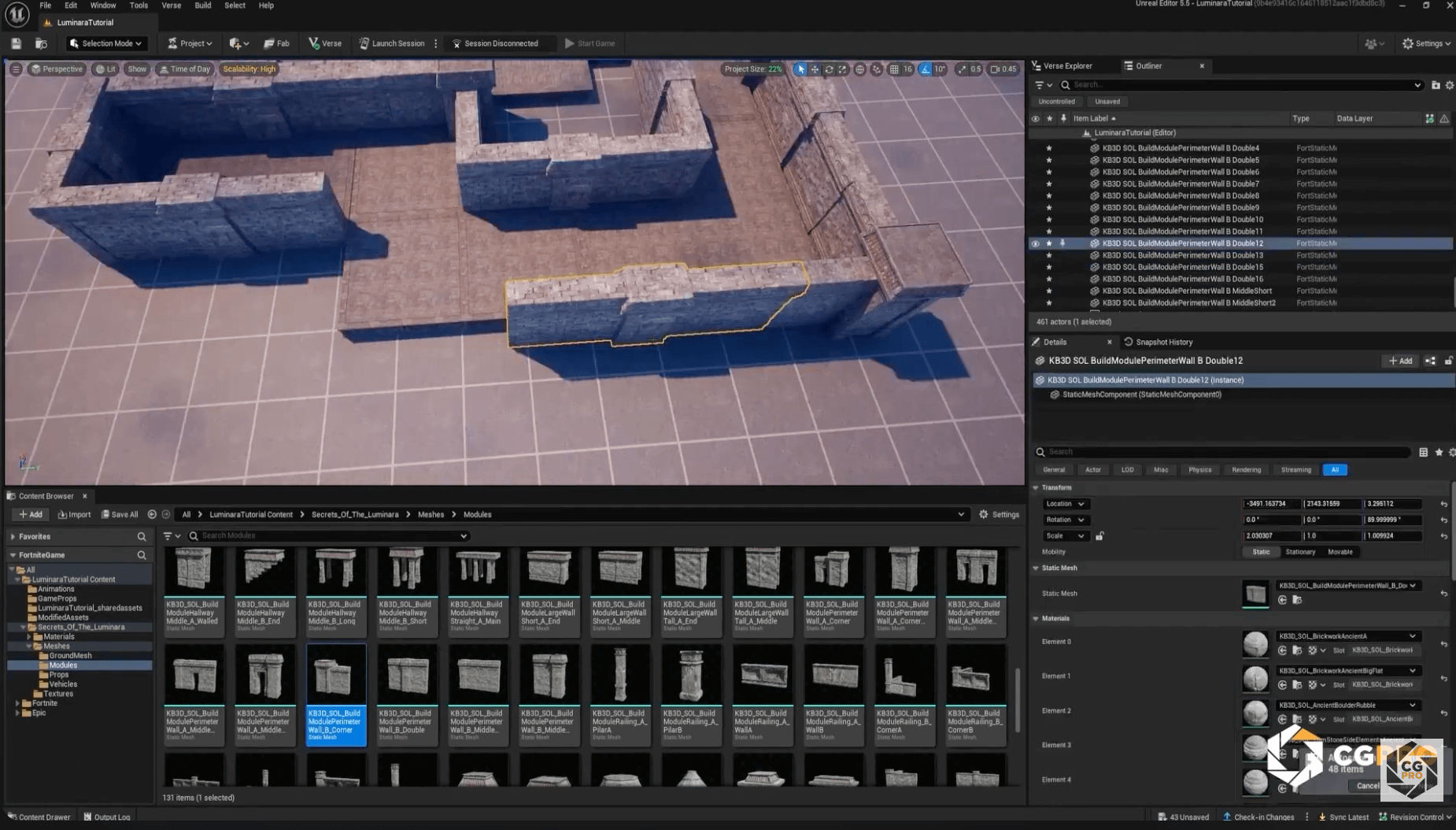
Unreal Engine for Fortnite (UEFN) provides some distinctive opportunities for creators. What excites you most about working within this platform, and how do you think it enhances the creative process for game designers?
Tamara: What really excites me about working within Unreal Editor for Fortnite (UEFN) is how it is a great entry point for aspiring game designers to enter this platform and produce a product very quickly. I think it really enhances the creative process due to the way UEFN provides mechanics through devices. You truly could create an experience without a single line of code if you wanted to. As well, it opens the door for game designers to program with Verse and explore developing new gameplay. That type of flexibility I believe is the power of bringing your vision to the Fortnite ecosystem.
Florian: What I love about UEFN is how you can take an idea and quickly publish a game or prototype and see if it’s successful. Traditional game development costs 10 to 100 times more. It’s also been very impressive to see all the new features added with each update over the last year. The potential is huge, and the future is exciting!

Finally, what advice would you give to students or aspiring creators who are just starting out with Unreal Engine? Are there specific skills or mindsets you think are essential for success?
Tamara: The best advice I can give to students or aspiring creators who are just starting out with Unreal Engine is that it is so important to learn early on what you don’t like! I always thought I was going to be a 3D environment artist but learned really quickly I didn’t enjoy 3D modeling. Learning then what I did enjoy which was creating tools and shaders allowed me to focus my time on that skill set. Even though tech art is where my passion is, I always advise to have that generalist mindset and have fun exploring all areas within Unreal Engine. It is so key to keep on learning and staying up to date with how these tools evolve. Always remember to have fun and you’ll find in time the role that brings you that spark!
Florian: Start small! There is so much to learn, trying to build a fancy project can be overwhelming. Loving to learn, being passionate about the art, being patient, it all helps. When I was younger, I was not ready to invest the time to learn, and I’m glad I did not force myself. Now I am really passionate about it and I don’t intend to ever stop learning. Ask yourself why you want to learn, and revisit your “Why” regularly. It’s easy to get sidetracked. Lastly, have fun, don’t forget self care, and share your passion with others. Oftentimes, the best way to learn is to teach.
Thank you Tamara and Florian for sharing your insights and creative journeys with us! Your work with Unreal Engine and UEFN has been truly inspiring, and we’re excited to see the incredible projects you’ll continue to develop. A huge thanks to CG Pro for collaborating on this fantastic Luminara tutorial. We hope their knowledge helps fuel your creative ambitions and encourages you, our awesome KB3D community, to explore the full potential of these powerful tools. Happy KitBashing!
Interview conducted and article written by Carmen Moreno.

